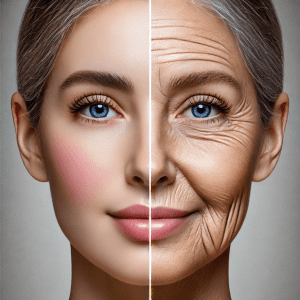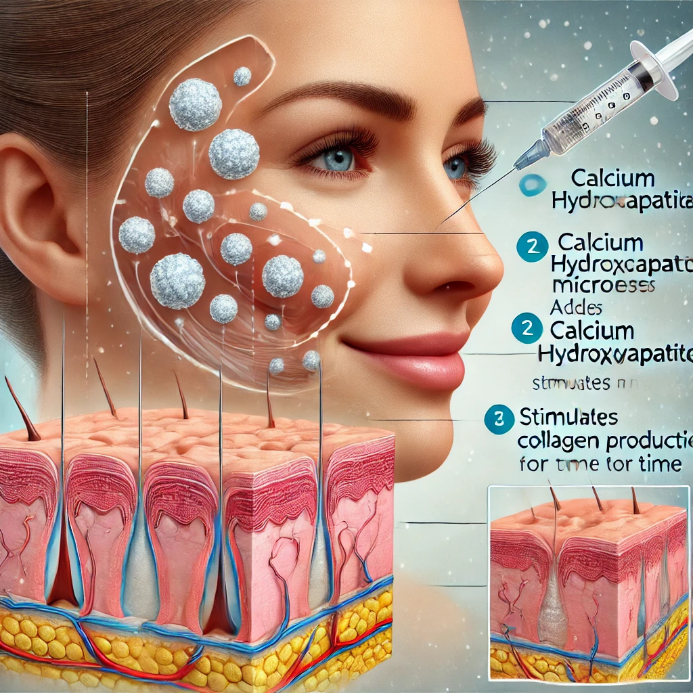Introduction
As we age, the face loses subcutaneous fat and natural substances like collagen and hyaluronic acid. This results in sagging, hollowed cheeks, or sunken areas. Aging affects the skin by causing it to lose volume, elasticity, moisture, and structural support, while also increasing the likelihood of wrinkles, pigmentation issues, and sagging. These changes are influenced by both internal factors, like genetics, and external factors, such as sun exposure, lifestyle, and environmental pollutants.
In today’s scientific world one of the ways to reverse or slowed down effect of ageing over skin is to use the dermal fillers.
Reading or listening about dermal fillers, several questions might come to a lay person’s mind to ensure safety, effectiveness, and overall satisfaction with the treatment, such as:
- Is it safe for my skin?
- How long will the effect last?
- What are the common side effects and risks?
- Is it a surgery intensive procedure?
Intention of this blog writing is to develop a preliminary understanding about dermal fillers.
Dermal fillers are injectable substances used to restore volume, smooth out wrinkles, and enhance facial contours. The primary goal of dermal fillers is to reduce signs of aging by filling in lines, wrinkles, or hollow areas of the face, such as nasolabial folds (laugh lines), cheeks, lips, and under-eye regions.
Dermal fillers are commonly made of materials like hyaluronic acid, calcium hydroxylapatite, poly-L-lactic acid. These materials are biocompatible and safe for cosmetic use and it is a non-surgical treatment option for facial rejuvenation.
Out of the dermal filler components one of the materials is Calcium hydroxylapatite (CaHA) or hydroxyapatite. It is a naturally occurring substance that has been approved by the FDA for use in a variety of dermal fillers.
Although, calcium hydroxylapatite is biosynthetically produced, it is present naturally in the enamel and bone cells of humans. CaHA is a highly effective and safe treatment option for a wide range of aesthetic indications, including the correction of moderate-to-severe facial lines and folds, as well as the replenishment of lost volume.
Mechanism of action
Calcium hydroxylapatite is an injectable dermal filler that comes in the form of microspheres suspended in an aqueous carboxymethylcellulose gel carrier and is injected into the skin. After entering the tissues, the gel conductor fills the hollow beneath and the skin around it becomes elastic, causing the creases to rise. The gel is eventually removed by macrophages, leaving just the hydroxyapatite microspheres, which promote endogenous collagen formation by the body, and collagen, in turn, builds a new skin matrix. After a while, calcium hydroxyapatite is entirely cleared from the body, and the skin’s qualities continue to improve.
The above figure is the illustration showing the before and after effects of dermal fillers on the face, highlighting areas such as the cheeks, under-eye region, and smile lines. It visually demonstrates the transformation from aging signs to a rejuvenated, smooth appearance.
Differences between Calcium Hydroxylapatite based fillers and other fillers
CaHA fillers have a thicker consistency than other injectables and have a substantially longer duration of action than other fillers. Because this chemical is very biocompatible with human tissue, there is a much lower risk of allergic responses to the injections, and a very low risk of complications. Moreover, CaHA is twice as efficient as hyaluronic acid, and it combines high elasticity and viscosity with the capacity to stimulate long-term collagen synthesis, making it a perfect agent for a comprehensive face treatment.
CaHA’s spectrum of applications has expanded in tandem with advancements in the area of aesthetic medicine, from a surface-oriented two-dimensional approach concentrating on the treatment of facial wrinkles and folds to a three-dimensional strategy that targets both soft and hard tissue volume loss in the face and hands.
Calcium hydroxyapatite-based filler is used to solve the following problems:
- To replace lost quantities in the cheeks and chin;
- To fill the nasolabial folds;
- To eliminate marionette lines;
- To restore clear lines and eruptions to the skin;
- To restore skin’s firmness and elasticity;
- To correct face oval correction;
- To smooth and replenish the dermis on the hands;
- To lift the tip of the nose.
One of the main advantages of calcium hydroxylapatite is that the results are immediate. Calcium hydroxylapatite is a good choice when the treated region requires significant volume restoration since it takes up more space than other dermal fillers.
The skin condition improves when a new tissue frame is generated with collagen fibers and microspheres and the dermis becomes more elastic. It’s expected to last between a year and 18 months. Although CaHA is a semi-permanent wrinkle filler, further injections may be required to maintain the effect.
Warning!
Injection of CaHA into the oral mucosa and the lips is an unapproved indication and may result in nodule formation. This occurs soon after injection and is a result of accumulated particles and not a granulomatous reaction. No osteogenesis has been reported in extensive literature describing the use of CaHA in a variety of soft tissue applications.
Conclusion
Long-term clinical experience has demonstrated that calcium hydroxylapatite is a very effective agent for many areas of facial soft tissue augmentation and is associated with a high and well-established safety profile.
Ceramat’s Vision for the Future
As a company rooted in bioceramics innovation, Ceramat Private Limited sees hydroxyapatite dermal fillers as a natural extension of our existing product portfolio. Leveraging our expertise in calcium phosphate materials, we are exploring the development of advanced fillers that offer long-lasting, safer, and more effective results. With a growing market and a clear demand for more biocompatible, natural-looking solutions, hydroxyapatite fillers represent a significant opportunity for us. Our R&D team is committed to ensure that any future product aligns with Ceramat’s core values of safety, sustainability, and excellence. By working closely with medical professionals and researchers, we aim to introduce dermal fillers that not only meet industry standards but also exceed patient expectations.

